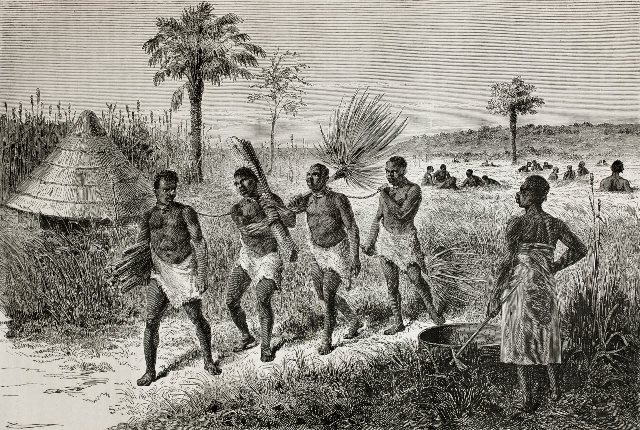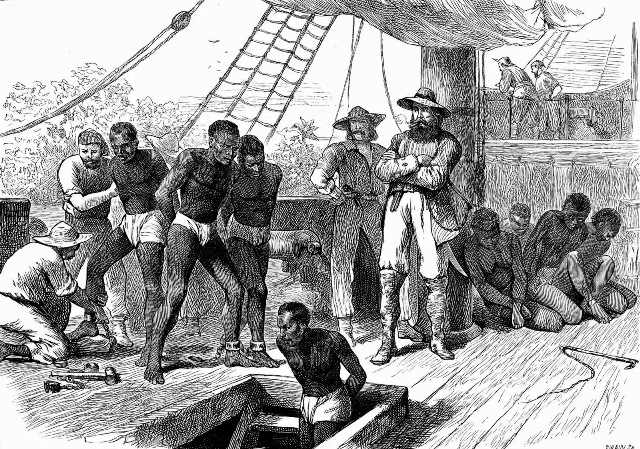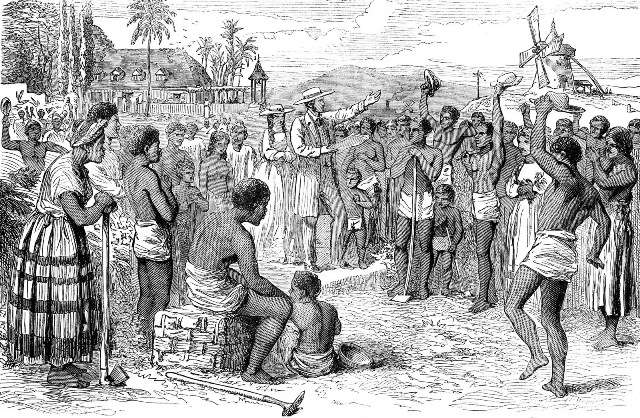The Transatlantic slave trade was the forced migration of Africans to the Americas across the Atlantic Ocean. Between 1525 and 1866, around 10 million to 12.5 million Africans were forcibly transported to the Americas. Most of these slaves were brought to the Caribbean and Brazil.
The slave trade had a profound impact on Africa. It led to the depletion of natural resources, disrupted social and political systems, and loss of human life. It also had a lasting impact on the economies of the Americas.
Recently, there has been a renewed interest in the Transatlantic slave trade. This is mainly because its legacy can still be felt in the Americas today. For example, the slave trade has been credited with the development of the African-American community in the United States. It has also been cited as a contributing factor to the current socio-economic disparities between the races in the Americas.
Whether you’ve heard about the transatlantic slave trade and want to know more or you haven’t at all, we’ll discuss everything you should know about the event here.
What Is the Transatlantic Slave Trade?
The Transatlantic slave trade involved the capture, enforced transportation, and sale of Africans to Europeans for slavery in the Americas. It lasted from the 16th to the 19th centuries. And it is more to blame than any other occurrence for the development of the African diaspora. This also includes the dispersion of Black people outside of their places of origin on the continent of Africa.

The Origins of the Transatlantic Slave Trade
Africans were already being transported on Portuguese ships by the 1480s for use as slave laborers on the sugar plantations in the eastern Atlantic islands of Madeira and Cape Verde. After 1502, Spanish conquistadors sent enslaved Africans to the Caribbean. But Portuguese traders continued to control the transatlantic slave trade for an additional 150 years. This involved them working out of their bases in the Congo-Angola region on Africa’s west coast.
During part of the 1600s, the Dutch rose to prominence as major slave traders. In the following century, English and French traders took over about half of the transatlantic slave trade. They sourced a sizable portion of their human cargo from West Africa between the Sénégal and Niger rivers. In 1713, Spain and Britain agreed to give Britain the exclusive right to trade slaves with the Spanish colonies.
According to the Asiento de Negros, Britain had the right to send 4,800 enslaved Africans to those colonies every year for 30 years. The South Sea Company, whose shares British Queen Anne owned in the amount of 22.5%, was given the contract for this delivery.
Before the year 1600, probably little more than a few hundred thousand Africans were brought to the Americas. However, the rise of tobacco and sugar plantations in North America’s Chesapeake region and the Caribbean in the 17th century led to a rapid increase in the demand for enslaved labor. Hence, the majority of slaves were transported to the Americas in the 18th century. Historians estimate that this was when roughly three-fifths of the whole transatlantic slave trade occurred.

The Effects of the Transatlantic Slave Trade in Africa
The slave trade had a terrible impact on Africa. A culture of lawlessness and violence was encouraged by the financial incentives provided to warlords and tribes to trade in human slaves. Economic and agricultural development in a large portion of western Africa was virtually impossible due to depopulation and persistent fear of enslavement. Most of those taken prisoners were young men and women in their reproductive years who would have otherwise been starting families. People who were aged, crippled, or otherwise dependent were typically the categories that the European enslavers left behind because they were least able to contribute to the prosperity of their societies.
However, the trade may have had unfavorable effects that went beyond the economy. This is because, politically, as African kings planned the abduction of slaves, customs of ruthless and arbitrary intrusion by the powerful in the lives of the common people emerged. Wars also developed from the competition between rival African monarchs for control of the slave trade and capture. Therefore, the transatlantic trade left an unsettling legacy and a negative impact on Africa’s political climate on both counts.
However, not all of the negative effects of slavery on Africa can be directly linked to the Atlantic slave trade. This means African kings were enslaving people for their personal use and to sell to the Middle East before, during, and after the era of the Atlantic slave trade.

What Is the Middle Passage?
The Middle Passage, also known as the Atlantic passage, was notorious for its brutality and the filthy, overcrowded conditions on slave ships. Hundreds of Africans were crammed into tiers below decks for a journey that could last from a few weeks to several months. The Middle Passage typically led to Brazil or an island in the Caribbean. Usually, the low ceilings prevented them from sitting upright, and they were chained together. The oxygen levels dropped so low that candles could no longer burn due to the insufferable heat. And the Africans were given a limited amount of time each day to spend outside on the upper decks. This was due to the crews’ concerns about rebellion. According to historians, around 15 and 25% of the enslaved Africans traveling to the Americas perished on slave ships.
However, the death rate decreased between the start of the 16th and the end of the 19th century. Although their value as slaves may have lessened such treatment, the enslaved captives were frequently the victims of atrocities and sexual assault. But because they were only paid for enslaved people delivered alive, ship commanders could not overlook the health of their human cargo.
Joseph Cinqué’s Infamous Rebellion on the Ship
In an episode on the slave ship Zong in 1781, Africans and crew members were dying from an infectious sickness. Then, Capt. Luke Collingwood, in an attempt to end the disease, ordered that over 130 Africans be thrown overboard. He subsequently made an insurance claim for the value of the killed slaves. However, the African prisoners occasionally managed to overthrow their captors and seize control of the ships. The most well-known account of such an episode occurred in 1839. A slave named Joseph Cinqué led a rebellion of 53 persons bought into slavery unlawfully on the Spanish ship Amistad. Together, they killed the captain and two crew members. As a result of this, the Africans were eventually compelled to return to their homes by the US Supreme Court.

Trading of Enslaved People Is Banned
The Northern American colonies at the time of the American Revolution (1775–1833) were heavily in support of outlawing the importation of further slaves. On the other hand, Congress didn’t outlaw the importation of slaves for more than two decades after the Revolution because Southern states insisted on it. But finally, the law was passed by Congress in 1808 with little opposition. However, Caribbean smugglers continued to break the law until it was enforced by the Northern blockade of the South during the American Civil War in 1861.
The trading of slaves was forbidden in Brazil in 1850, but it wasn’t until 1888 that the country finally achieved liberation. Then, the smuggling of fresh enslaved individuals into Brazil came to an end. The British navy fiercely opposed the trade of enslaved people in the Atlantic after Great Britain banned slavery throughout its empire in 1833. This was to obstruct slave-trading operations by using its ships.
The Impact of the Transatlantic Slave Trade Today
The Transatlantic Slave Trade had a lasting impact on the world. More than 12.5 million Africans were forcibly shipped to the Americas during the 400 years of the slave trade. And the resulting diaspora has influenced the cultures of the Americas.
Today, the Transatlantic Slave Trade is remembered through the African diaspora, which is present in all corners of the Americas. In the United States, the Transatlantic Slave Trade is commemorated through African American History Month, which is celebrated every February. And in Brazil, the Transatlantic Slave Trade is remembered through the Afro-Brazilian religion of Candomblé.
No doubt, the Transatlantic Slave Trade was a dark chapter in human history. But its legacy continues to have an impact on the world today.
Due to the transatlantic slave trade, there are currently 51.5 million people of African heritage living in North America (the United States, Mexico, and Canada), 66 million in South America, 1.9 million in Central America, and over 14.5 million in the Caribbean islands. These diasporic peoples have seen centuries of change and turmoil. They have created rich cultural traditions, distinctive civilizations, and autonomous countries. Yet they retain some characteristics of their shared African past. But they could have done that in Africa and made their home better than it is today. Unfortunately, they were taken away. Forcefully.
Before you go…
Hey, thank you for reading this blog to the end. I hope it was helpful. Let me tell you a little bit about Nicholas Idoko Technologies. We help businesses and companies build an online presence by developing web, mobile, desktop, and blockchain applications.
We Design & Develop Websites, Android & iOS Apps
Looking to transform your digital presence? We specialize in creating stunning websites and powerful mobile apps for Android and iOS. Let us bring your vision to life with innovative, tailored solutions!
Get Started TodayAs a company, we work with your budget in developing your ideas and projects beautifully and elegantly as well as participate in the growth of your business. We do a lot of freelance work in various sectors, such as blockchain, booking, e-commerce, education, online games, voting, and payments. Our ability to provide the needed resources to help clients develop their software packages for their targeted audience on schedule is unmatched.
Be sure to contact us if you need our services! We are readily available.
Put Your Tech Company on the Map!
Get featured on Nicholas Idoko’s Blog for just $200. Showcase your business, boost credibility, and reach a growing audience eager for tech solutions.
Publish Now










